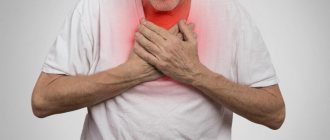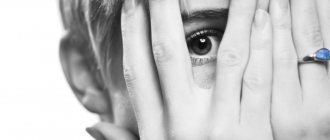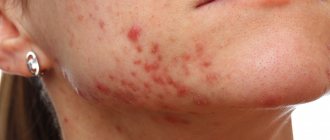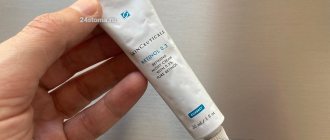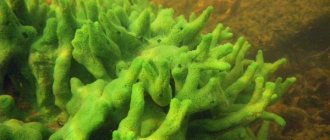Why does my tongue go numb?
External reasons
Short-term numbness of the tongue is provoked by the consumption of certain foods. The tip of the tongue often goes numb in heavy smokers. Sometimes the symptom occurs when drinking strong alcoholic drinks, in a state of intoxication. In young children, a temporary decrease in sensitivity may be caused by compression of the tongue when trying to insert it into small cavities, for example, a tube or a construction element.
Dental manipulations
The tongue becomes numb for a short time after dental anesthesia; normally, sensitivity is completely restored after a few hours. If the rules of the procedure are violated, the symptom may persist for a long time. Long-term paresthesia is sometimes observed after the removal of wisdom teeth, near which there are branches of sensory nerves.
Constant numbness often worries people with metal dentures and fillings. The reason is the interaction of several metals in a liquid medium. Under the influence of saliva, a galvanic current is produced, which irritates the mucous membrane, causing paresthesia and numbness.
Other medical effects
Taking medications with anesthetics (throat sprays, bellasthesin, which eliminates stomach pain) causes numbness of the tongue lasting up to several minutes. More severe reactions occur with the development of neurological complications of local anesthesia due to the absorption of a large amount of the drug or its erroneous injection into a vein. Numbness of the tongue and oral cavity is accompanied by dizziness, metallic taste, ringing in the ears, and tremors. Convulsions, disturbances of consciousness and speech are possible.
When performing a behind-the-ear blockade, numbness of the tongue is observed normally; it is a marker indicating that the needle has hit the right place. May persist for 24 hours after the procedure and may be associated with slight dizziness. Long-term or permanent loss of sensitivity sometimes results from operations on the ENT organs and facial structures and is associated with compression or mechanical damage to the nerves.
Numbness of the tongue
Glossalgia
It manifests itself as constant or periodic numbness, rawness, tingling, burning of the tongue. Symptoms become more pronounced during a conversation, with excitement and fatigue, and decrease while eating. The tongue and oral mucosa are not changed. Glossalgia is a functional disorder that often develops in patients with neuroses, depression, and psychosomatic diseases. Secondary glossalgia is provoked by the following conditions:
- Diseases of the digestive system
: gastritis, cholecystitis, hepatitis, pancreatitis. - Endocrine pathologies
: hypothyroidism, Itsenko-Cushing's disease, diabetes mellitus. - Damage to the central nervous system
: condition after ischemic or hemorrhagic stroke, encephalitis, meningoencephalitis, neurosyphilis. - Diseases of peripheral nerves
: sympathalgia, damage to the hypoglossal autonomic ganglion and glossopharyngeal nerve. - Connective tissue diseases
: dermatomyositis, scleroderma.
Glossodynia
Numbness, burning, tingling, itching, crawling sensation and the presence of hair are bilateral in nature, occurring on the tip or anterior 2/3 of the tongue, less often in the root area. At the initial stage, the attack lasts several minutes. Over a long period of time, the area of discomfort increases. Severe paresthesia persists for several hours; even outside an attack, patients are bothered by constant discomfort. Hyposalivation is often observed. Glossodynia is caused by:
- Gastrointestinal diseases
: colitis, gastritis, cholecystitis, pancreatitis, peptic ulcer. - Endocrine disorders
: diabetes mellitus, thyroid pathologies. - Pathologies of the heart and blood vessels
: ischemic heart disease, hypertension, atherosclerosis. - Diseases of the nervous system
: vegetative-vascular dystonia.
Desquamative glossitis
The disease may be asymptomatic or accompanied by numbness, tingling, and burning. Areas of whitish-gray plaque form on the tongue, in place of which red or bright pink smooth spots form. The affected areas quickly become covered with epithelium and are replaced by other lesions, so the appearance of the tongue is constantly changing.
Nervous diseases
Numbness of the anterior sections of the tongue develops when the third branch of the trigeminal nerve is damaged, the posterior sections are damaged by the glossopharyngeal nerve, and the root is damaged by the vagus nerve. The cause of damage is trauma, compression by a tumor or inflammatory infiltrate, or germination by malignant neoplasia. After irradiation for oncological processes, radiation neuralgia is possible. In addition, impaired sensitivity of the tongue is detected in the following diseases of the nervous system:
- Stroke.
The symptom appears suddenly, complemented by muscle weakness and sensitivity disorders of half the body, speech disorders, and facial asymmetry. - Epilepsy.
Numbness of the tongue is detected as part of the aura before partial attacks. May be combined with dizziness, weakness, nausea, drowsiness, chest pain, ringing and noise in the ears, and a feeling of a lump in the throat. - Acute encephalopathy.
The pathology is provoked by intoxications and dysmetabolic disorders. It manifests itself as numbness of the tongue, severe headache, unsteadiness of gait, vomiting, and visual disturbances. - Neurocardiogenic syncope.
The symptom occurs before fainting, lasts no more than 2 minutes, and is accompanied by nausea, dizziness, auditory and visual disturbances, anxiety, and a feeling of imminent fall.
Other reasons
The list of other pathological conditions accompanied by numbness of the tongue includes:
- Parasitic diseases
. The symptom accompanies many helminthic infestations, and is especially often found with ascariasis and acariasis. - Emergency conditions
. Loss of tongue sensation is observed in victims with delayed cyanide poisoning. Complemented by a metallic taste, pain and heaviness in the heart area. Gives way to convulsions and subsequent paralysis. - Mental disorders
. Numbness of the tongue sometimes occurs during panic attacks. Some patients with hysterical neurosis complain of paresthesia and sensory disturbances.
Disorders of facial innervation
A neurotic face may develop due to damage to the nerves that innervate it. Most often these are the trigeminal and facial nerves.
The trigeminal nerve is the 5th pair of cranial nerves. It is the largest of all 12 pairs of these nerve fibers.
N. trigeminus arises symmetrically on both sides of the face and consists of 3 large branches: the ophthalmic, maxillary and mandibular nerves. These three large processes innervate a fairly large area:
- skin of the forehead and temples;
- mucous membrane of the oral and nasal cavities, sinuses;
- tongue, teeth, conjunctiva;
- muscles - chewing, floor of the mouth, palatine, tympanic membrane.
Accordingly, when it is damaged, pathological sensations arise in these elements.
Facial nerve – 7th pair of cranial nerves. Its branches surround the temporal and ocular region, the zygomatic arch, and descend to and behind the lower jaw. They innervate all facial muscles: auricular, orbicularis and zygomatic, chewing, upper lip and corners of the mouth, cheek. As well as the muscles of the lower lip and chin, around the mouth, the muscles of the nose and laughter, and the neck.
N. facialis is also paired, and is located on both sides of the face.
In 94% of cases, the damage to these nerve fibers is unilateral, and only 6% is a bilateral process.
Disruption of innervation can also be primary or secondary.
Primary is the lesion that initially involves the nerve. This could be hypothermia or strangulation.
Secondary damage develops as a consequence of other diseases.
Another reason for the development of facial neurosis is neurogenic and mental disorders. When unpleasant sensations in the face and head occur against the background of psycho-emotional arousal, shock, or as a result of stressful situations.
Diagnostics
The cause of tongue numbness is determined by a dentist. Patients with neurological symptoms are referred for consultation to a neurologist. In the absence of manifestations of dental and neurological diseases, an extensive examination is carried out with the involvement of a gastroenterologist, psychiatrist, and other specialists. To make a diagnosis:
- Dental examination.
The doctor assesses the condition of the tongue, identifies areas of epithelial desquamation, cracks, and signs of inflammation. Examines the oral cavity for other changes, specifies the type of fillings and dentures. - Neurological examination
. For isolated pathologies, curtain and pharyngeal reflexes and the excitability of the muscle fibers of the tongue are examined. For neurological diseases, reflexes, muscle strength, and sensitivity in various parts of the body are examined. - Saliva studies
. The water indicator is determined using special strips. Potential differences are measured to detect galvanic currents. The subjects are prescribed sialography and ultrasound of the salivary glands. - Other instrumental techniques
. For glossodynia and glossalgia, electromyography is performed. If diseases of the digestive system are suspected, an ultrasound of the abdominal cavity and gastroscopy are performed. - Lab tests
. As part of a laboratory examination, microscopic and microbiological examination of saliva, general and biochemical blood tests, and determination of the acidity of gastric juice can be performed.
Examination of the tongue
Trigeminal neuralgia
This is another lesion of the nerve fiber structure, which is often chronic and accompanied by periods of exacerbation and remission.
It has several causes, which are divided into idiopathic - when a nerve is pinched, and symptomatic.
The main symptom of neuralgia is paroxysmal sensations in the form of pain on the face and in the mouth.
Pain sensations have characteristic differences. They are “shooting” and resemble an electric shock; they arise in those parts that are innervated by the n.trigeminus. Having appeared once in one place, they do not change localization, but spread to other areas, each time following a clear, monotonous trajectory.
The nature of the pain is paroxysmal, lasting up to 2 minutes. At its height, a muscle tic is observed, that is, small twitching of the facial muscles. At this moment, the patient has a peculiar appearance: he seems to freeze, but does not cry, does not scream, and his face is not distorted from pain. He tries to make a minimum of movements, since any of them increases the pain. After the attack there is a period of calm.
Such a person performs the act of chewing only with the healthy side, at any time. Because of this, compaction or muscle atrophy develops in the affected area.
The symptoms of the disease are quite specific, and its diagnosis is not difficult.
Therapy for neuralgia begins with taking anticonvulsants, which form its basis. Their dose is subject to strict regulation and is prescribed according to a specific scheme. Representatives of this pharmacological group can reduce agitation and the degree of sensitivity to painful stimuli. And, therefore, reduce pain. Thanks to this, patients have the opportunity to freely eat and talk.
Physiotherapy is also used. If this treatment does not give the desired result, proceed to surgery.
Treatment
Pre-hospital assistance
In most cases, emergency medical measures are not required. Exceptions are neurological pathologies and cyanide poisoning. In case of poisoning due to parenteral administration of cyanide to a limb, a tourniquet should be applied. Victims are advised to administer amyl nitrite and resuscitate measures to maintain vital functions.
It is recommended that stroke patients be placed in the lateral position to prevent accidental aspiration of saliva and vomit. The likelihood of restoration of neurological functions directly depends on the time of treatment, so it is necessary to call an ambulance as quickly as possible. If signs of an aura appear in an epileptic, the possibility of accidental injury must be excluded.
Conservative therapy
For diseases of the tongue, sanitation of the oral cavity, treatment of provoking and supporting somatic diseases, a special diet, and sometimes psychotherapy are indicated. The drug therapy regimen includes anti-inflammatory, antihistamine and sedatives, B vitamins, iron supplements, and biostimulants. Rinsing with solutions of antiseptics and local anesthetics is effective.
For dry mouth, lubricate the tongue with a solution of vitamin A in rosehip oil. According to indications, immunomodulators and medications with antibacterial and antifungal effects are used. For patients with severe pain, nerve blocks are performed. The listed activities are supplemented with physiotherapeutic techniques: ultrasound therapy, SMT therapy, ultraphonophoresis, medicinal electrophoresis.
Patients with neurological pathology and complications of local anesthesia from the central nervous system are prescribed anticonvulsants, neuroprotectors, vitamin-mineral complexes, analgesics, antispasmodics, and vasoactive agents. If necessary, antibacterial therapy and detoxification are carried out. In case of poisoning, resuscitation measures are continued, neutralizing drugs and anticoagulants are used.
Surgery
For glossodynia, glossalgia and desquamative glossitis, surgical interventions are not indicated. The tactics of surgical treatment of patients with tongue numbness due to nerve damage is determined by the cause of the pathology. It is possible to open inflammatory infiltrates, remove tumors, and microsurgical decompression for scarring.
In patients with stroke, craniotomy, open excision, or stereotactic aspiration of the hematoma may be recommended. For epilepsy, callosotomy, hemispherectomy, lobectomy and other techniques are used. In acute encephalopathy due to arterial occlusion, carotid-subclavian bypass surgery, carotid endarterectomy, and vertebral artery replacement are performed.
What will help restore sensitivity?
If during VSD your arms or legs are numb, you feel chills - take a hot shower, put on socks, wrap yourself in a warm blanket.
A hot drink will not only warm you up, but also activate reflex mechanisms that will return normal sensitivity to your limbs.
If numbness occurs after stress, take a sedative and try to sleep. For vegetative-vascular dystonia, Glycine is the best choice. Unlike herbal preparations, it will improve metabolism in nervous tissue at the cellular level and help recover from stress.
The combination of glutamic acid, glycine and cystine in Eltacin® helps to gradually bring dystonia under control and reduce the frequency of all symptoms. We recommend taking it in courses, as well as if your arms, legs or tongue become suddenly numb. After two or three courses of amino acids, manifestations of VSD will bother you less and less often, including sensory disturbances.
How to get rid of nervous tics
In order to free yourself from unpleasant sensations, you must first eliminate their problem. Sometimes all it takes is a good night's sleep. In another case, you need to change the situation for a while, get out of the destructive environment.
Among the auxiliary methods used are herbal soothing teas, baths with the addition of aromatic oils, swimming, walks in the fresh air or sports: running, yoga.
Add ingredients with a high content of calcium and magnesium to your menu. These include fermented milk products, buckwheat, bran bread, red fish, eggs, and meat. Vegetables and fruits include beets, currants, dried fruits, nuts and parsley.
If these foods do not fit into your diet, consider taking appropriate vitamin supplements. Do not overuse strong tea and coffee.
And most importantly: remain optimistic and calm in any situation!
In cases where the condition worsens, psychotherapy is sought. Cognitive behavioral therapy is especially effective in helping to stop tic disorders at the stage of their precursors.
Habit reversal therapy teaches patients movements that help prevent the development of neurological facial symptoms.
Medications include anticonvulsants and muscle relaxants, Botox injections, and antidepressants.
If the above methods are ineffective in combating nervous tics, they turn to deep brain stimulation. A device is installed in the GM that controls electrical impulses.
Which doctor should I contact?
If your tongue becomes numb, you should consult a dentist, family doctor or therapist. Once diagnosed, treatment is aimed at eliminating the cause of paresthesia. You may need help with this:
- cardiologist
- gastroenterologist
- surgeon
- endocrinologist
- neurologist
Further therapy depends on the diagnosis and doctor's prescription. It may include taking vitamins, medications, physiotherapy, massage, or surgery.
Nervous tics in children
There are several types of such disorders in childhood.
Transient tic disorder begins to manifest itself during early school age. Its duration ranges from 1 month to 1 year. Motor types of tics occur more often. Mainly typical for children with developmental delays and autism.
Chronic disorder occurs before age 18. And lasts from 1 year and above. In this case, either motor or vocal tics develop. The earlier the pathological symptoms appear, the easier and faster they pass.
Tourette syndrome is a multiple tic disorder characterized by both motor and movement types. A serious disease, which, however, softens with age.
A special type of disease, which is also characterized by signs of the nervous type, is minor chorea. It develops against the background of infections caused by streptococcus: sore throat, tonsillitis, rheumatism. Accompanied by pathological changes in nervous tissue.
Along with hyperkinesis, emotional instability, irritation, restlessness and anxiety, this condition corresponds to neurotic changes in the face. They are expressed in tension and spasms of the facial muscles, which is often mistaken for grimacing. There is also a spasm of the larynx, manifested in inappropriate screams.
At school, such children, not knowing the true cause of facial hyperkinesis, and even in combination with increased activity, are reprimanded and kicked out of class. Such an attitude towards the child forces him to miss school classes and avoid going to school. Treatment for chorea minor, along with sedatives, includes antibiotics to fight infection and anti-inflammatory drugs.
A nervous tic leaves a heavier imprint on a child’s psyche than on an adult. It often causes anxiety and detachment, withdrawal, and even provokes depressive disorders. Causes sleep disturbances, speech difficulties, and learning difficulties.
Tic disorders lead to distorted self-perception and decreased self-esteem.
Parents of such children are advised not to focus the child’s attention on the problem. On the contrary, they recommend finding ways to shift attention and increase self-esteem. A special place is given to support groups for such people and communication in general.
Real life examples
Some famous people, whose fame sometimes trumpets all over the world, were also hostage to the pathology of the facial nerve.
Sylvester Stallone, who is known for his enchanting roles, was injured at birth. The actor's mother had a difficult birth and he had to be pulled with forceps. The result is damage to the vocal cords and paresis of the left side of the face. Because of this, Stallone had problems with speech, which became a reason for ridicule from his peers.
The actor grew up as a difficult child. But, in spite of everything, he managed to overcome his defect and achieve considerable success, although partial immobility of his face remained.
Domestic showman Dmitry Nagiyev received facial asymmetry, which was nicknamed “Nagiyev’s squint”, due to paresis of the facial nerve. The illness happened unexpectedly. As a theater student, one day he felt that his face was not moving.
He spent 1.5 months in the hospital to no avail. But one day in his room a window broke due to a draft. Fright provoked a partial return of mobility and sensitivity of the facial part, but the left part retained its immobility.



